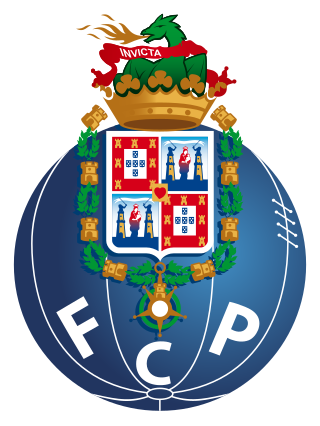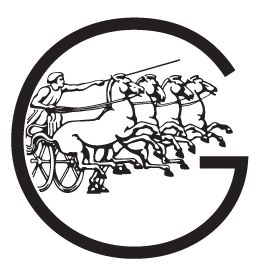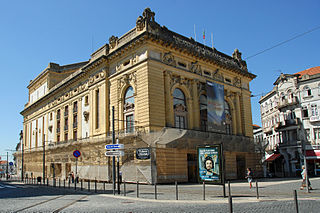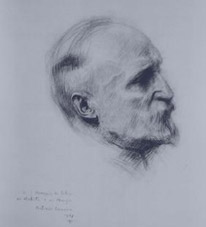| |||||
| Centuries: | |||||
|---|---|---|---|---|---|
| Decades: | |||||
| See also: | List of years in Portugal | ||||
Events in the year 1869 in Portugal .
| |||||
| Centuries: | |||||
|---|---|---|---|---|---|
| Decades: | |||||
| See also: | List of years in Portugal | ||||
Events in the year 1869 in Portugal .


Futebol Clube do Porto, MHIH, OM, commonly known as FC Porto or simply Porto, is a Portuguese professional sports club based in Porto. It is best known for the professional football team playing in the Primeira Liga, the top flight of Portuguese football.

The Calouste Gulbenkian Museum houses one of the world's most important private art collections. It includes works from Ancient Egypt to the early 20th century, spanning the arts of the Islamic World, China and Japan, as well as the French decorative arts, the jewellery of René Lalique and some of the most important painters of all times works such as Rembrandt, Monet, Rubens, Manet, Renoir, Degas and Turner.

João Baptista da Silva Leitão de Almeida Garrett, 1st Viscount of Almeida Garrett was a Portuguese poet, orator, playwright, novelist, journalist, politician, and a peer of the realm. A major promoter of theater in Portugal he is considered the greatest figure of Portuguese Romanticism and a true revolutionary and humanist. He proposed the construction of the D. Maria II National Theatre and the creation of the Conservatory of Dramatic Art.

Bernardo de Sá Nogueira de Figueiredo, 1st Marquess de Sá da Bandeira was a Portuguese nobleman and politician. He served as Prime Minister of Portugal for five times. He was the most prominent Portuguese defender of the abolition of slavery in Portugal and its domains.

Luís da Silva Mouzinho de Albuquerque was a Portuguese military officer, engineer, poet, scientist and politician, who distinguished himself during the Liberal Wars and in the conflicts that marked Portugal's history in the first half of the 19th century. He served as the Minister of the Kingdom during the liberal regency of Pedro of Braganza. This was the most prominent post inside the government at that time, which made him the Prime Minister of Portugal in all but name. He was also several times minister and deputy minister during the Constitutional Monarchical period. Among other offices, he served as Chief of the National Mint, captain-general and governor of Madeira, and inspector-general of public works. He was the grandfather of Joaquim Augusto Mouzinho de Albuquerque, a military officer and colonial administrator.

Rotunda da Boavista, officially known as the Praça de Mouzinho de Albuquerque, is a large roundabout in Porto, Portugal. It honours Joaquim Augusto Mouzinho de Albuquerque, a Portuguese soldier who fought in Africa during the 19th century.

The São João Theatre, commonly referred to as the São João National Theatre is a Portuguese theatre and concert venue in civil parish of Cedofeita, Santo Ildefonso, Sé, Miragaia, São Nicolau e Vitória, in the municipality of Porto, in northern Portugal.

José Marques da Silva was a Portuguese architect and educator.

Manuel Marques de Sousa, Count of Porto Alegre, nicknamed "the Gloved Centaur", was an army officer, politician and abolitionist of the Empire of Brazil. Born into a wealthy family of military background, Manuel Marques de Sousa joined the Portuguese Army in Brazil in 1817 when he was little more than a child. His military initiation occurred in the conquest of the Banda Oriental, which was annexed and became the southernmost Brazilian province of Cisplatina in 1821. For most of the 1820s, he was embroiled in the Brazilian effort to keep Cisplatina as part of its territory: first during the struggle for Brazilian independence and then in the Cisplatine War. It would ultimately prove a futile attempt, as Cisplatina successfully separated from Brazil to become the independent nation of Uruguay in 1828.

Maria José Marques da Silva (1914-1996) was a Portuguese architect who, like her celebrated father, designed buildings in her native city of Porto. In 1943, she became the first woman to graduate as an architect from the Porto School of Fine Arts.

The Secondary School Luís de Camões is a secondary school located in the civil parish of Arroios, in the municipality and Portuguese capital of Lisbon, classified as a Monumento de Interesse Público in 2012.
Events in the year 1870 in Portugal.
Events in the year 1865 in Portugal.
Events in the year 1868 in Portugal.
Events in the year 1890 in Portugal. There were 951,000 registered voters in the country.

David Moreira da Silva was a Portuguese architect of the Porto School of Fine Arts, where he completed the Special Course in Civic Architecture in 1929. He trained in Paris, at the Laloux-Lemaresquier atelier, and later received a scholarship from the National Board of Education and the Institute for High Culture.

The Porto School is a movement of modern and contemporary architecture in Portugal. Grounded in the teaching at the Porto School of Fine Arts and the Porto School of Architecture, it is one of the most influential architectural movements in the history of Portuguese architecture. Its main figures, Fernando Távora, Álvaro Siza Vieira, and Eduardo Souto de Moura are some of the most globally renowned Portuguese architects.